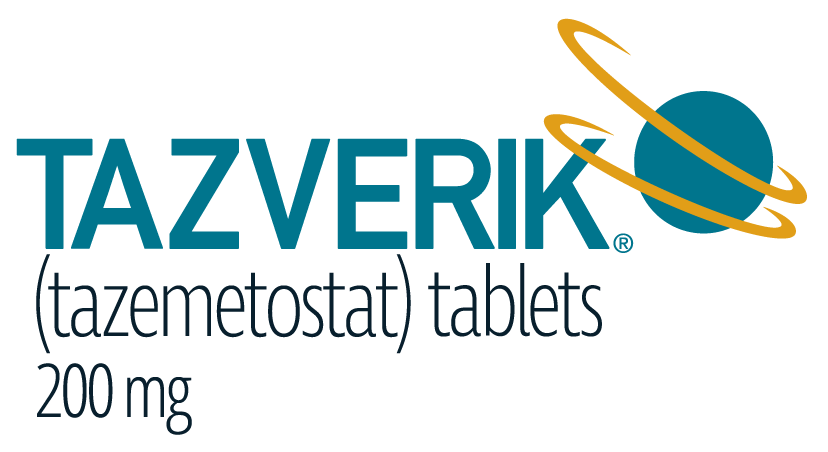TAZVERIK® was studied with 6 cohorts of patients, including 2 cohorts with histologically confirmed R/R FL1,2
Enrolled 2 cohorts: EZH2 WT (n=54) and MT (n=45) patients1
- Patients in the EZH2 MT cohort had the following mutations: Y646X [S,H,C] (36%), Y646F (29%), Y646N (27%), A682G (11%), and A692V (2%)
Selected inclusion criteria1:
- R/R FL after ≥2 systemic therapies
- ECOG PS 0-2
Selected exclusion criteria3:
- Noncutaneous malignancies other than B-cell lymphomas
- Leptomeningeal metastases or brain metastases
- Thrombocytopenia, neutropenia, or anemia of Grade ≥3
TAZVERIK dosing was
800 mg (4 tablets x 200 mg)
twice daily until confirmed
disease progression or
unacceptable toxicity1
Assessments by IRC every 8 weeks through 24 weeks, then every 12 weeks1
Median duration of follow-up was 36 months (WT; range: 32 to 39) and 22 months (MT; range: 3 to 44)1
- Primary endpoint1:
Overall response rate (ORR) - Selected secondary endpoint1:
Median duration of response (DOR)
EZH2 WT and MT cohorts were analyzed independently and were not intended to be compared directly.1
TAZVERIK was studied in a heavily pretreated FL patient population1
BASELINE DISEASE CHARACTERISTICS1,2 |
EZH2 WT (n=54) |
EZH2 MT (n=45) |
|---|---|---|
|
ECOG PS 0 or 1, % |
91 |
100 |
|
ECOG PS 2, %* |
7 |
0 |
|
POD24, % |
59 |
42 |
|
Median time from initial diagnosis, years |
6.3 |
4.7 |
|
Median number of lines of prior systemic therapy (range) |
3 (1 to 8) |
2 (1 to 11) |
|
Refractory to rituximab, % |
59 |
49 |
|
Double refractory to rituximab, %† |
28 |
20 |
|
Refractory to last therapy, % |
41 |
49 |
|
Prior stem cell transplant, % |
39 |
9 |
Baseline characteristics were notably different across the EZH2 WT and MT cohorts with more clinically challenging patients in the WT cohort.1,2
Baseline characteristics were
notably different across the
EZH2 WT and MT cohorts
with more clinically challenging
patients in the WT cohort.1,2
*ECOG PS was missing for one WT patient.3
†And an alkylating agent or purine nucleoside antagonist.2
EZH2=enhancer of zeste homolog 2; WT=wild type; MT=mutant type; ECOG PS=Eastern Cooperative Oncology Group Performance Status; IRC=Independent Review Committee; POD24=early progression within 24 months following front-line therapy.
References: 1. TAZVERIK (tazemetostat) Prescribing Information. Cambridge, MA: Epizyme, Inc., August 2024. 2. Morschhauser F, Tilly H, Chaidos A, et al. Tazemetostat for patients with relapsed or refractory follicular lymphoma: an open-label, single-arm, multicentre, phase 2 trial. Lancet Oncol. 2020;21(11):1433-1442. doi:10.1016/S1470-2045(20)30441-1 3. Data on File.
